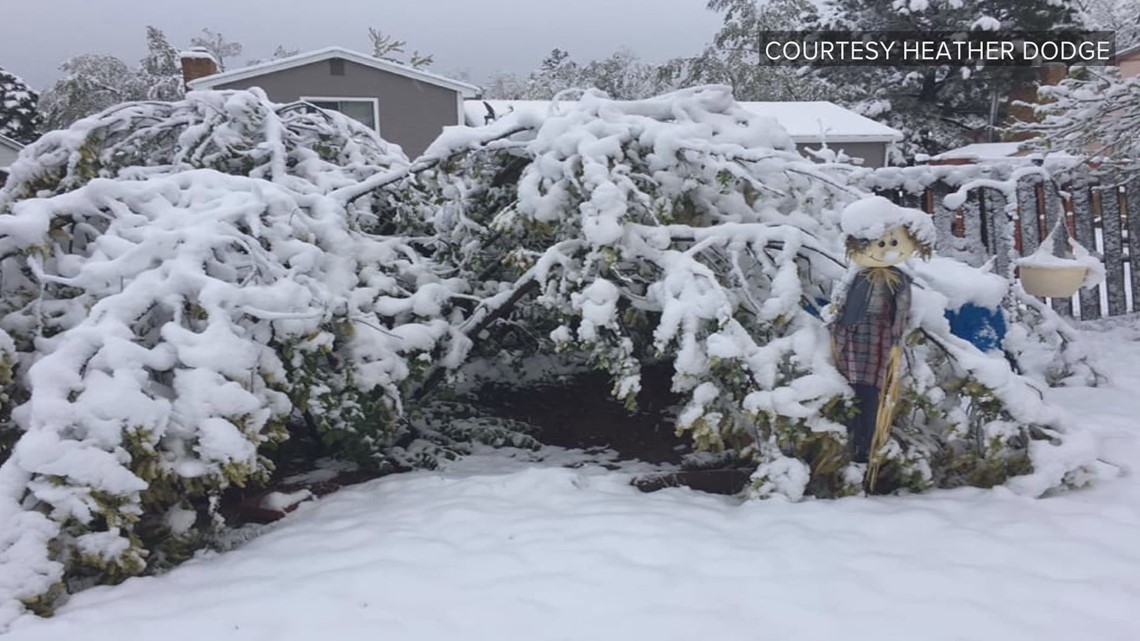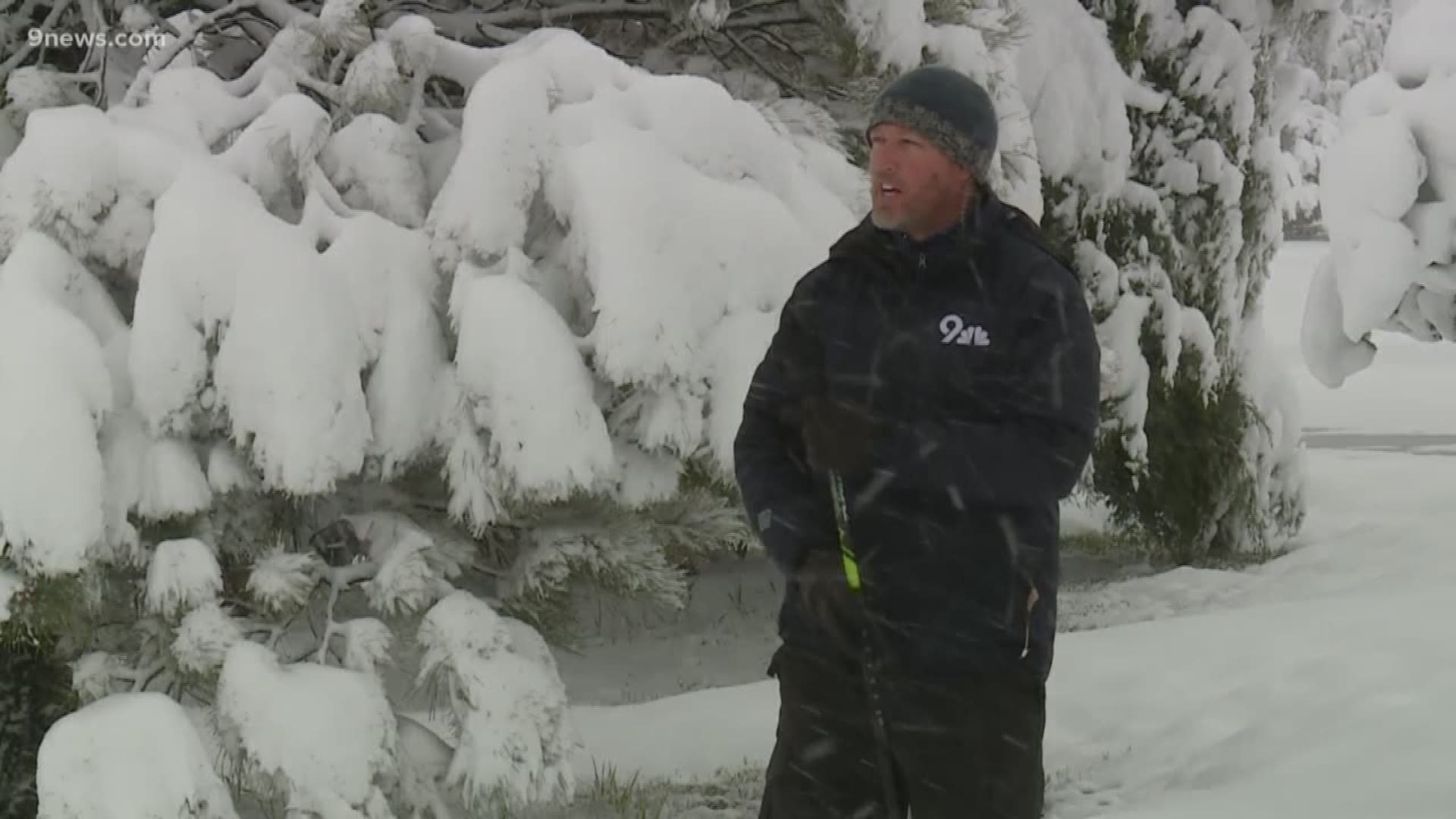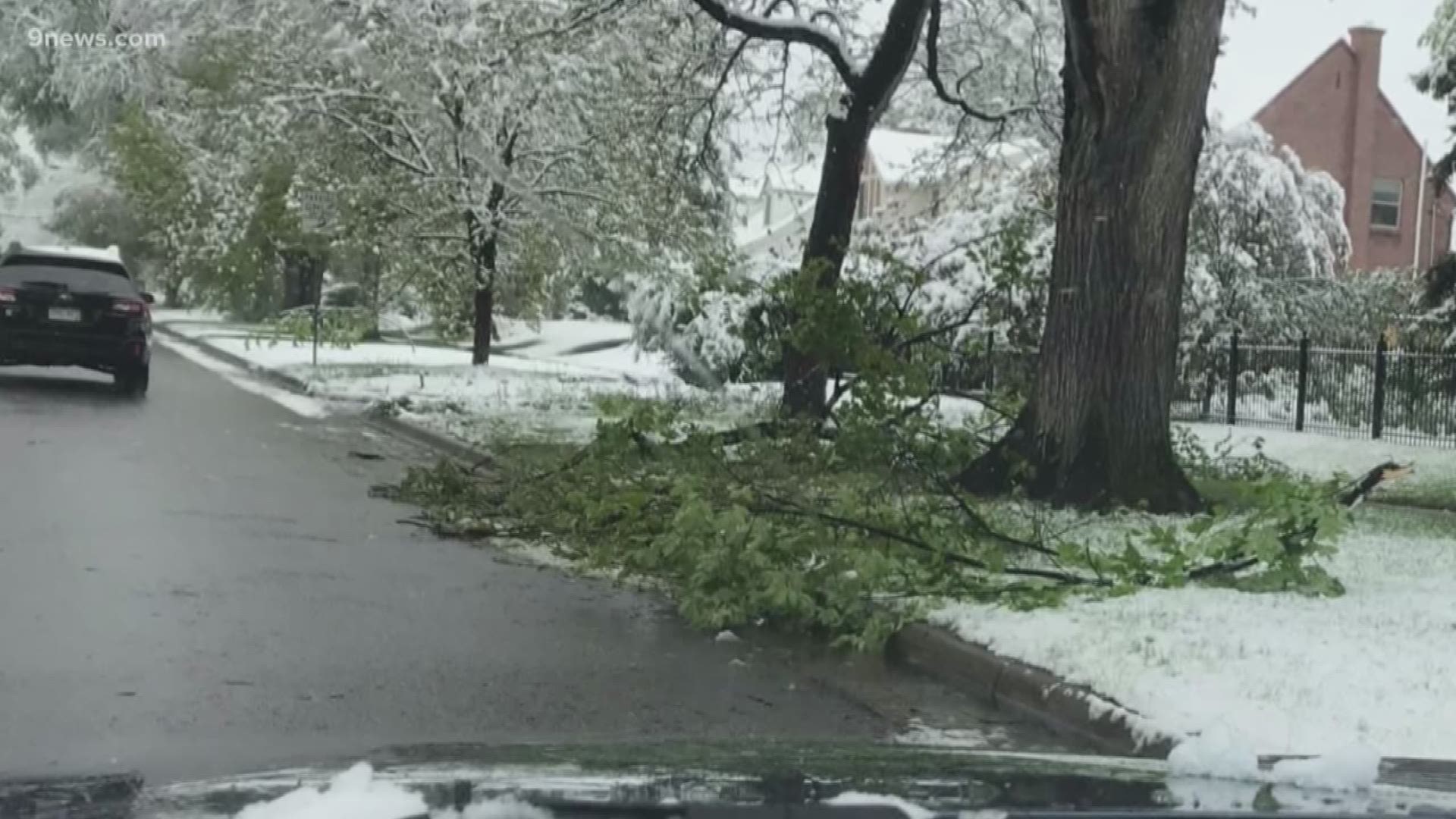DENVER — When snow falls this late into May, trees are more susceptible to damage because the snow tends to be heavy and wet. Many trees are also covered with leaves which allows more snow to accumulate on them.
Homeowners who have downed trees should first assess the condition of the tree to avoid getting injured or damaging the tree further, according to the Colorado State Forest Service.
9NEWS spoke with Denver City Forester Rob Davis in April 2018 after a storm that packed powerful winds brought down trees across the city. He urged homeowners dealing with fallen trees and limbs to stay within “their comfort level” to fix the problem.
"If it’s an obvious, small branch down and you can clear it out, that’s great if people can do that themselves. If it’s something up in the air, a tree that’s broken and its swaying and it's moving, anything larger that people don’t feel comfortable with, go to a licensed professional or licensed contractor,” he said.


If it appears the tree has fallen on powerlines, it's best to leave it alone and wait for Xcel to come and clear it.
Here are some other tips for taking care of snow-damaged trees from the Colorado State Forest Service:
- Check for hazards. Before approaching the tree, make sure your surroundings are safe. Check for downed utility lines and avoid standing under broken or hanging branches.
- Contact city officials if necessary. Trees between the street and a city sidewalk may be the responsibility of city crews.
- Assess the damage. If a tree is healthy overall and still possesses its leader -- the main upward branch -- most of its major limbs and 50 percent or more of its crown, the chances are good for a complete recovery.
- Be careful knocking snow off branches. It might be tempting to just take a broom and whack at it, but this may cause branches to break. If you must remove snow, gently push up on branches from below to prevent adding additional stress.
- Remove broken branches. This minimizes the risk of decay and insects or diseases entering the wound on the tree. Prune at the branch collar -- the point where a branch joins a larger branch -- and be mindful of potential pent-up energy if the branch is twisted or bent.
- Don't over-prune. Trees may look unbalanced and uneven with damaged branches removed. Trees quickly grow new foliage that hides most bare areas.
- Don't try to do it all yourself. If the job requires running a chainsaw overhead, sawing from a ladder or removing large branches or entire trees, contact an insured, certified arborist. Professionals often are listed in the phone book under "tree services."
For more information on tree care and protection, visit the Colorado State Forest Service website: http://csfs.colostate.edu/.
SUGGESTED VIDEOS | Science is cool



